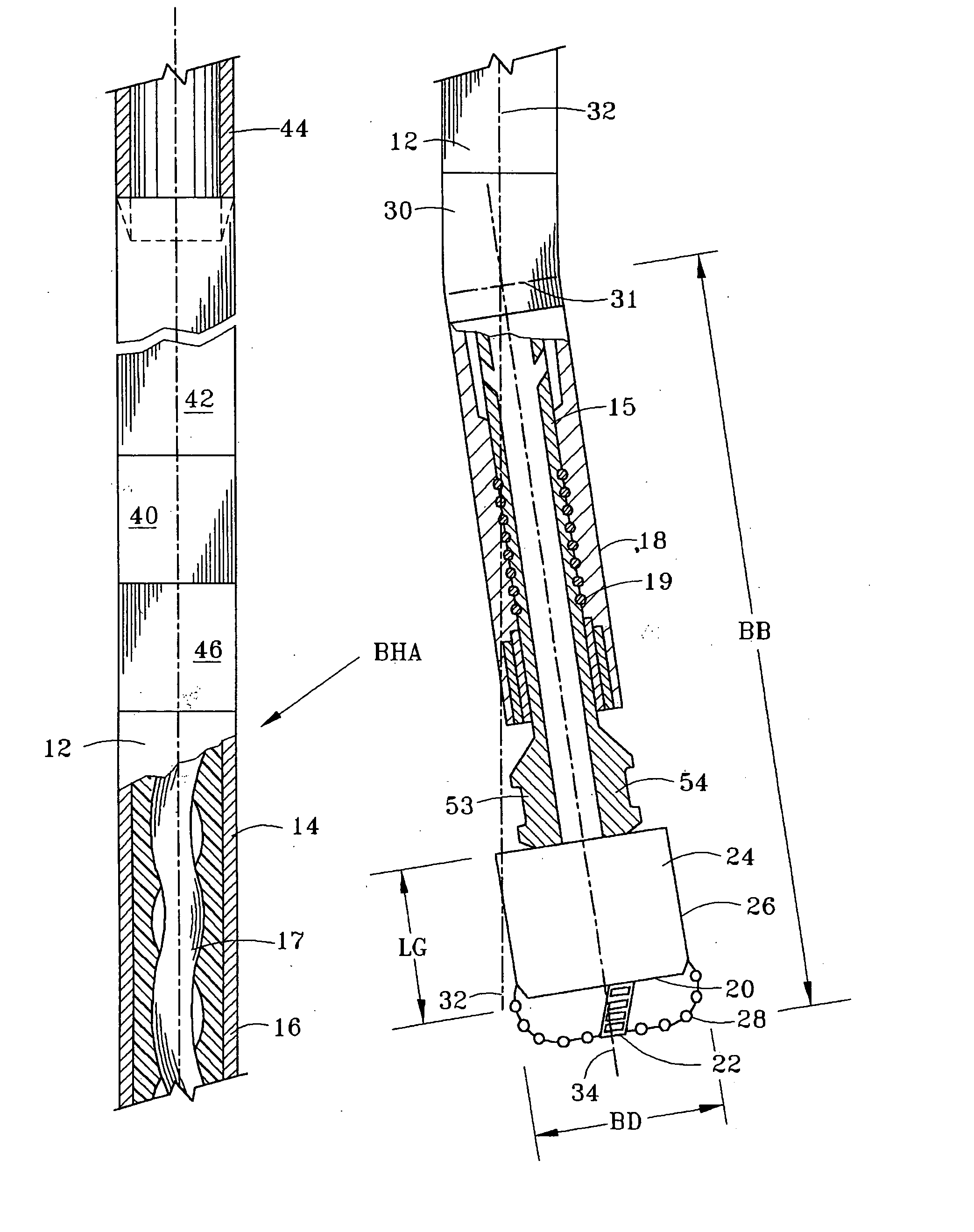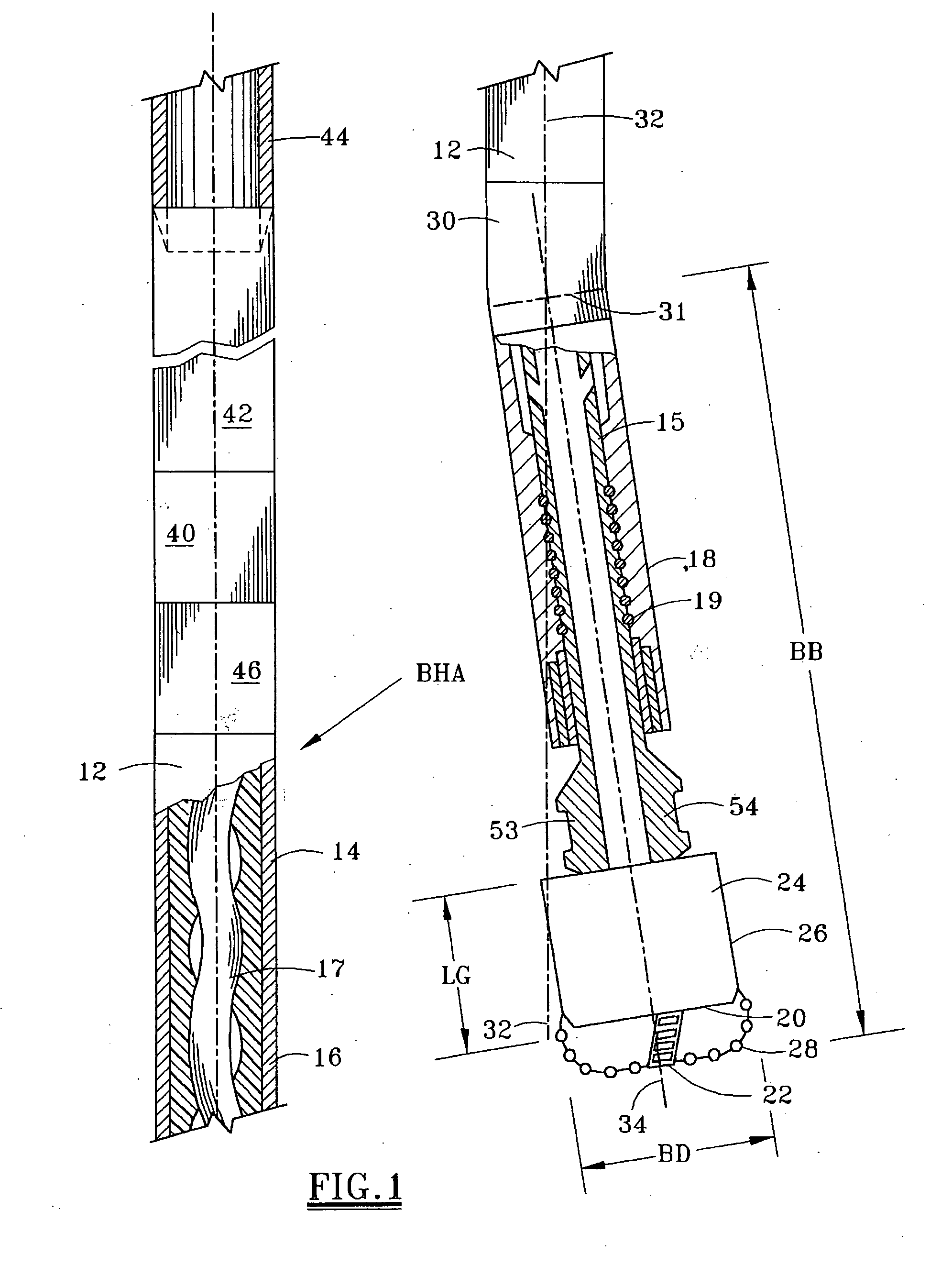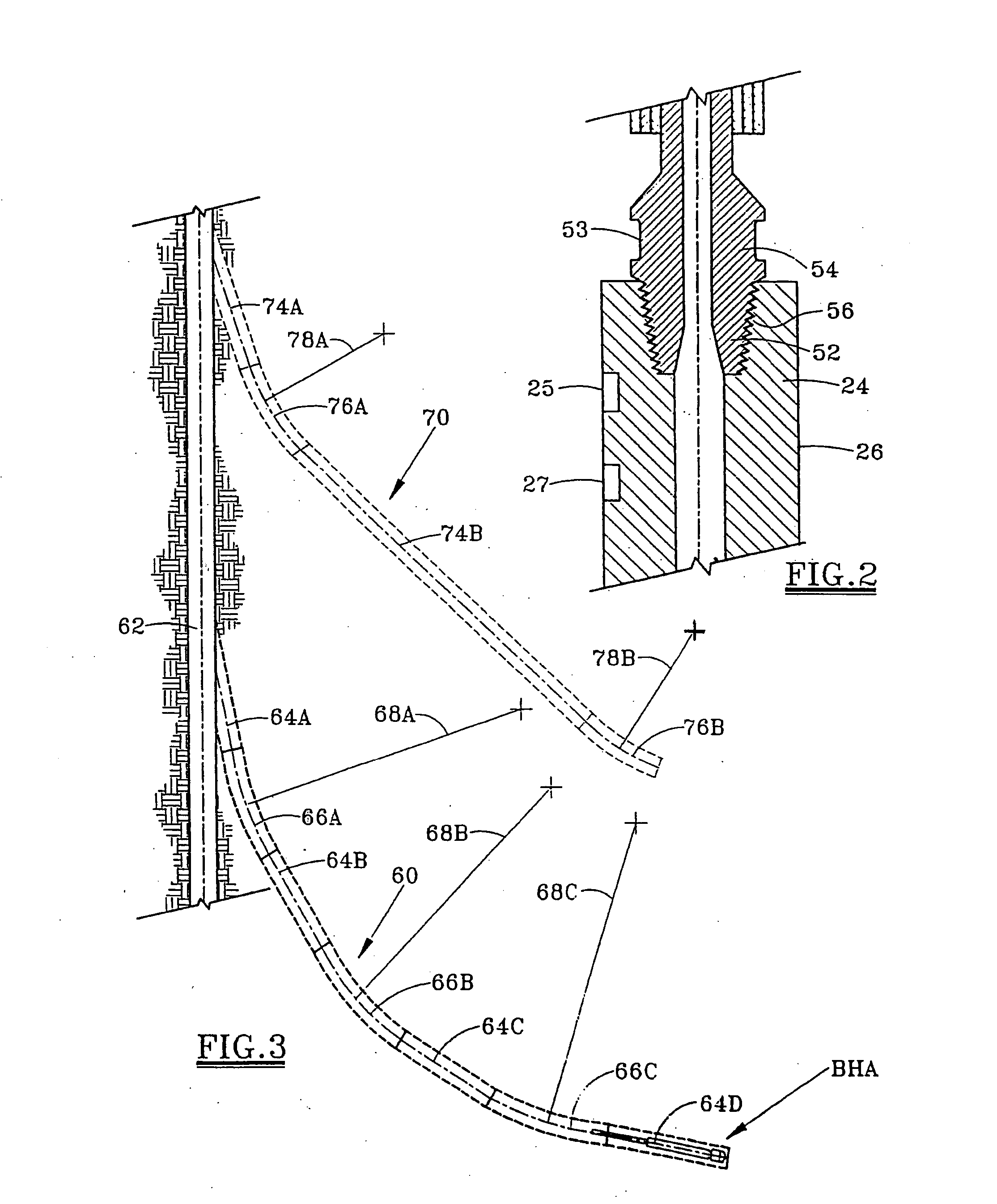Steerable drilling system and method
a drilling system and a technology of bottom holes, applied in the direction of directional drilling, survey, borehole/well accessories, etc., can solve the problems of sacrificing directional control, altering the drilling trajectory, and difficult sliding of the bha, so as to improve rigidity, reduce the effect of torque pdm and efficient us
- Summary
- Abstract
- Description
- Claims
- Application Information
AI Technical Summary
Benefits of technology
Problems solved by technology
Method used
Image
Examples
Embodiment Construction
[0062]FIG. 1 depicts a bottom hole assembly (BHA) for drilling a deviated borehole. The BHA consists of a PDM 12 which is conventionally suspended in the well from the threaded tubular string, such as a drill string 44, although alternatively the PDM of the present invention may be suspended in the well from coiled tubing, as explained subsequently. PDM 12 includes a motor housing 14 having a substantially cylindrical outer surface along at least substantially its entire length. The motor has an upper power section 16 which includes a conventional lobed rotor 17 for rotating the motor output shaft 15 in response to fluid being pumped through the power section 16. Fluid thus flows through the motor stator to rotate the axially curved or lobed rotor 17. A lower bearing housing 18 houses a bearing package assembly 19 which comprising both thrust bearings and radial bearings. Housing 18 is provided below bent housing 30, such that the power section central axis 32 is offset from the low...
PUM
 Login to View More
Login to View More Abstract
Description
Claims
Application Information
 Login to View More
Login to View More - R&D
- Intellectual Property
- Life Sciences
- Materials
- Tech Scout
- Unparalleled Data Quality
- Higher Quality Content
- 60% Fewer Hallucinations
Browse by: Latest US Patents, China's latest patents, Technical Efficacy Thesaurus, Application Domain, Technology Topic, Popular Technical Reports.
© 2025 PatSnap. All rights reserved.Legal|Privacy policy|Modern Slavery Act Transparency Statement|Sitemap|About US| Contact US: help@patsnap.com



